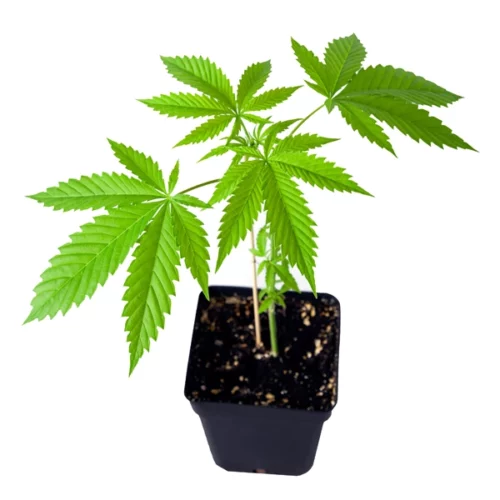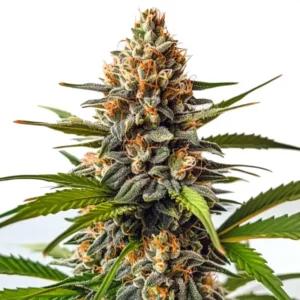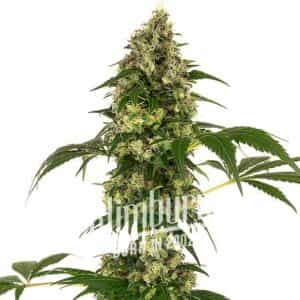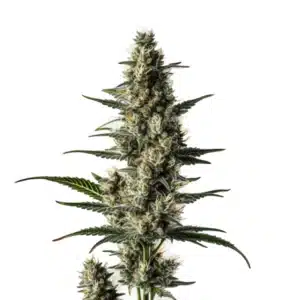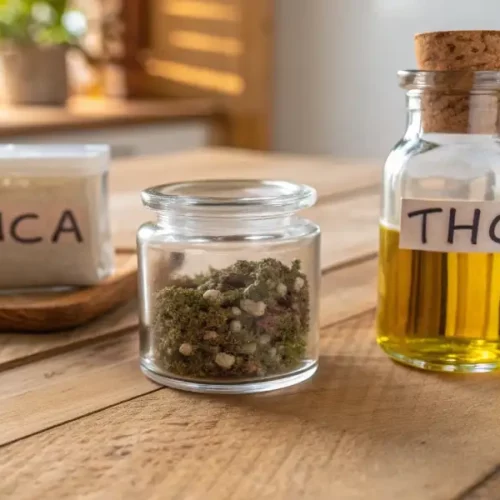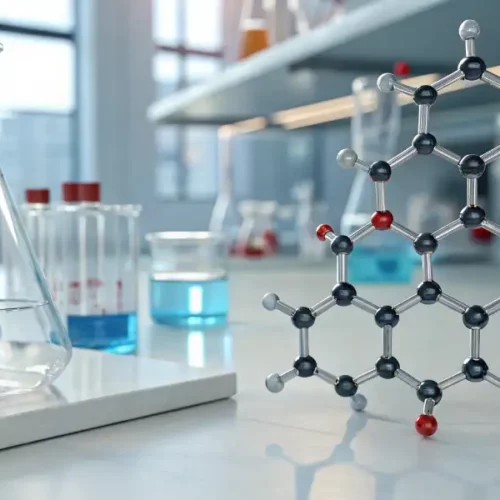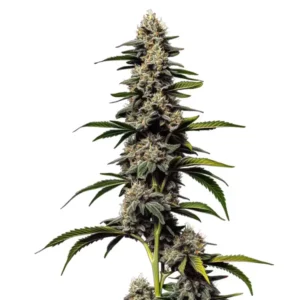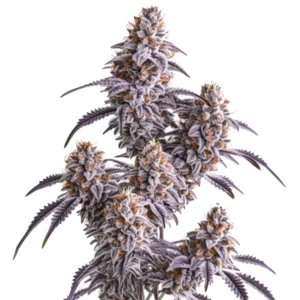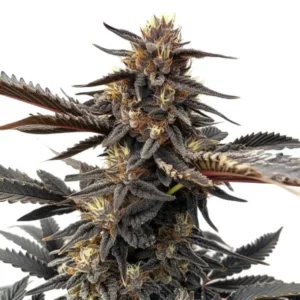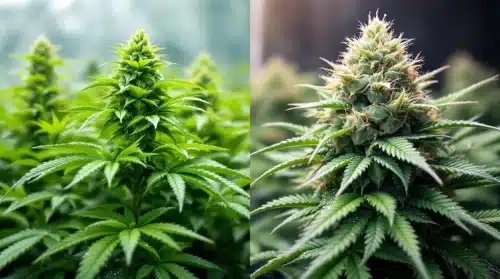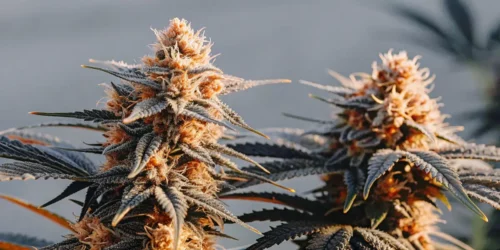Every cannabis grower knows that the main purpose is to grow the best possible buds, both for their large size and also for how healthy they are. Obviously, you’re going to be disappointed when some strains don’t deliver the fat, sticky, healthy bud harvest you want. For instance, California Dream and Double Runtz clones clones are popular choices for growers aiming for exceptional yields of marijuana buds.
Power Roots
As the plant grows, the root system expands around the entire substrate in what is known as “colonization” and forms a kind of network (with a structure similar to the visible part of the plant). Choosing the substrate well is key so that the roots can easily colonize it, so it must be porous enough, although not too much so as to ensure adequate water retention. If we notice that our substrate is too compact (it does not drain properly, it is always waterlogged), we can add perlite or vermiculite to aerate it.
Recommended Strains
California Dream
 THC: 13% - 17%
THC: 13% - 17% Type of seed: Feminized
Type of seed: Feminized Phenotype: Mostly Indica
Phenotype: Mostly Indica Day to flower: 8 - 10 weeks
Day to flower: 8 - 10 weeks
Double Runtz clones
 THC: 19% - 29%
THC: 19% - 29% Type of seed: Feminized
Type of seed: Feminized Phenotype: Mostly Indica
Phenotype: Mostly Indica Day to flower: 8 - 9 weeks
Day to flower: 8 - 9 weeks
It is good to point out that the roots of the plants are of vital importance for their survival and correct development. The root system allows the plant to cling to the ground and gives it firmness. A plant with poor roots will surely need staking to stay upright.
The above is of vital importance because the roots are responsible for capturing and transferring nutrients and water to the leaves, which is essential for carrying out the process of photosynthesis. Through this process, plants transform nutrients into sugars to supply the energy necessary for the production of plant tissues, such as marijuana buds. A diseased or poorly developed root system can seriously reduce the production of marijuana buds in our crops. This is especially true for high-yield varieties like the Hektol strain, which depends on a vigorous root system to reach its full potential. At the same time, the larger the root system, the more the plant will grow, resulting in a more abundant yield of cannabis.
Remove yellow leaves from your crops
When the marijuana buds plants begin to flower, the leaves begin to show a yellow color because natural wear occurs due to the consumption of nutrients and the work that each weed plant does for the development of the buds. So, to speed up the growth of your plant’s buds, it is recommended to remove dead yellow leaves.
The yellow leaves are considered lost because they do not contribute anything to the plant. On the contrary, they only consume the nutrients that can be used in the production of the desired buds.
Nutrients for the plant of Marijuana Buds
Both marijuana plants as well as trees and all species of flora require nutrients to develop well. These nutrients are acquired mainly from the soil and from more stimulating fertilizers designed for cannabis cultivation. However, in the case of hydroponic or coconut crops, both the water and the substrate do not contain enough nutrients for the growth and flowering of the plant. To meet the needs of the cannabis plant, it is necessary to have a feeding plan which can be supported by nutrients whether they are commercial ones that you can buy at any grow shop or that you can make at home.
Now, quality fertilizers and stimulants for weed plants contain high amounts of nitrogen for development in the growth phase where the plant creates its stems and leaves. For its part, during the flowering phase, potassium facilitates the production of marijuana buds, along with phosphorus. Currently, many of the marijuana flowering fertilizers also contain other nutrients that enhance the push towards a more exuberant flowering, such as Calcium, Magnesium, or Iron. These fertilizers are typically represented by their elementary symbols of N, P, and K respectively.
Here, we are going to focus on fertilizers for flowering. We recommend that it is best to change the types of fertilizers for this stage. Here, more potassium and phosphorus is required and specific fertilizers have an NPK ratio of 10-30-10. These guarantee optimal performance of the cannabis plant while it blooms. When the plant is reaching its last phase of maturation, it becomes more independent of nutrients because it does not require them. So, fertilizers are stopped to avoid salt saturation, bad flavors, and other negative effects on the buds.
Marijuana buds foxtailing
To grow fox tails with compact buds, a large number of breeders use 400W and/or 600W HPS lighting systems. In general, typical grow tents are 1.2m x 1.2m x 2m where 400W lighting systems are used in a lighting cycle of 18 hours of light and 6 hours of darkness for feminized strains during the growth period. There are growers that use more powerful 1000 W bulbs, however, these are intended for experienced gardeners because they tend to get very hot and require cooling systems, otherwise they can damage the entire crop.
Currently, the most efficient and modern solution is to use LED-type lighting because they do not heat up, they consume less energy, and they fulfill the same function as HPS lighting systems. Obviously, they are not the cheapest lights on the market. Despite that, their long life, which can be 10 years or more, compensates for the cost.
Promos & Deals
Harvest at the right time of Marijuana Buds
Selecting the correct time to harvest your weed plants is essential. For this, it is necessary to analyze the state of the plant’s trichomes as the buds mature. However, the harvest time depends on each variety. For example, the mostly indica or hybrid strains tend to have a shorter flowering cycle than the mostly sativa or pure sativa strains. This is also the case with autoflowering or fast version genetics which are much faster than feminized or regular strains with shorter times throughout their cycle.
Also, it is said that when the trichomes are cloudy in color, it is because they are at their point where the buds can be harvested. When they are brown, they are usually considered to be extremely ripe and therefore, their effect is more relaxing and narcotic. Another option is to harvest the buds when they are of a mixed color, that is, half cloudy and the other amber which will produce effects that can range from sedative to active.
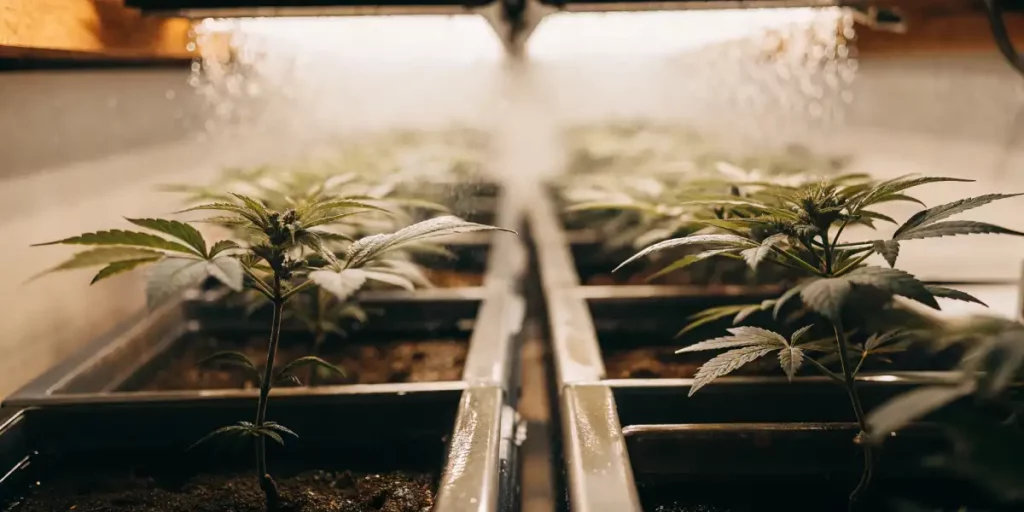
Use CO2
Weed breeders have managed to establish that by adding CO2 to the grow room, yield can increase by up to 20%. So, to achieve the greatest effectiveness with the use of CO2, it is estimated that temperatures should be between 30 and 35 °C when the lighting system is on.
However, you must be careful because the excess or lack of CO2 can be harmful to your plants. Therefore, you must know how to apply it because it is estimated that it should be at 250 PPM.
It is also good to say that there are different types of ways to utilize CO2. Here, we leave you some of the most essential.
1- CO2 generator: This type of generator is recommended to be used in large growing rooms because they burn gas, so they generate heat. Therefore, it is best to use it in large grow rooms to avoid damaging weed plants.
2- Compressed CO2: Unlike the previous CO2, gases that raise the temperature or humidity are not burned and can also be set to automatic.
3- CO2 bags: This type of system uses mushrooms which produce CO2. However, it is necessary to have four or more bags to be able to produce the necessary amount of CO2 even if you have a small growing room to obtain the desired PPM .
4- Dry ice: Heated dry ice releases carbon dioxide into the air. This is usually an effective short-term solution, but due to the cost it generates, it is not practical in the long term. This is because dry ice must be added daily and this also makes it difficult to control the amount of carbon dioxide in the air.
5- Fermentation: This process generates smaller amounts of CO2, although it is done in a completely natural process. On the other hand, the odors it emanates are usually quite unpleasant. An example of this is compost, an element that produces a relatively small amount of CO2.
Temperature and Humidity in flowering time
It is important to reduce the humidity levels from 50% to 40% during the flowering stage so that the buds develop in a good way. At most, the humidity can reach 55% but never reach or exceed 60%. On the other hand, the temperature can drop from 78 to 68 degrees Fahrenheit. Finally, in the latter part of the flowering period or one or two weeks before harvest, humidity levels can be reduced to 40% to 30%.
Now, if you want to lower the temperature during the day, the lights can be kept off. During the night, turn them on. Another step to follow is to include an air conditioning system which can help reduce humidity. Also, the use of ventilation aimed at the lighting system helps reduce the temperature of the HPS lights.
Pruning and training Marijuana Buds plants
If you want to harvest bigger and more powerful buds, pruning and plant training is 100% necessary. For this, you can moderately cut the leaves that shade the colas and also remove the shoots from the lower part of the plant to avoid harvesting the buds called “popcorn” that tend to have more spongy characteristics and only take energy and nutrients from the superior buds. With this, you ensure that the plant produces huge, fat, heavy, and super resinous buds at the top in their colas.
In other articles, we have talked about the training of plants with techniques such as Scrog which consists of putting a mesh above the plants to guide the arms of the plants so that they grow uniformly. With this, in the flowering phase, the buds grow in a uniform way because each one of them receives the correct lighting in a homogeneous way.
Another technique that can be used is LST which, as we have already pointed out, consists of stretching the arms of the plant to promote its homogeneous growth and also allows the air to circulate better, preventing humidity from affecting the buds. Thus, large, robust, and hard buds are developed which also receive a good dose of light and fresh air thanks to the stretch provided by LST.
Select the best cannabis seeds for indoor or outdoor cultivation. Generally, the mostly indica or hybrid strains deliver larger harvests with more compact, fat, and resinous buds. It is important to make a good selection of seeds that you can buy here at Blimburn Seeds with the guarantee of our seed bank.
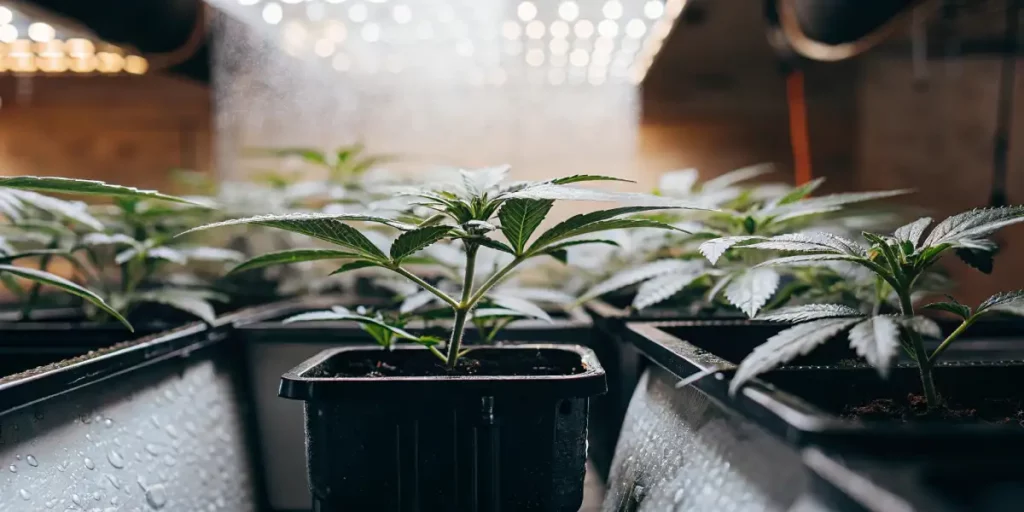
MAC
This strain, known as MAC, is an incredible indica with levels of 23%-27% THC. It can be harvested in just 60-65 days of flowering, delivering buds with magical colors and flavors of spice and wood and with citrus notes.
Growers who have bred this strain in their gardens appreciate the large amount of trichomes and resin that MAC provides which makes it a perfect strain for extractions. Even some experts in extractions such as rosin point out that MAC is a true champion because it returns good proportions of rosin with each tightening in the machines.
Master Kush
Master Kush is a mostly indica strain that is full of power with THC levels ranging from 20%-24%. Its buds are ready to be harvested after 8-10 weeks of flowering. In addition, the taste of the buds is earthy and pungent with hints of pine.
Master Kush gives large harvests of 400 gr/m2 indoors and 450 gr/plants outdoors with great marijuana buds. It adapts greatly to hotter and more humid climates. It also supports fungi such as mold and insect pests, so it can be grown outdoors and in the greenhouse without major problems, although it will still need work in its maintenance and care.
Hektol
Despite being a mostly sativa strain, we recommend Hektol because it has a super short flowering cycle of only 55 days with overwhelming yields of 650 gr/m2 indoors and 750gr/plant outdoors with great, large caliber buds with flavors that evoke musky.
Also, it is said that it is an incredible strain for medicinal use because it has a good strain of terpenes which are reminiscent of flowers such as lavender and also woods such as pine For this reason, they have certain anti-inflammatory qualities that can help users to control or reduce pain.
You already know how to get long colas full of buds and wonderful robust flowers that are heavy and full of resin. Following these tips and complementing with other tips, you will surely get a great crop. Practice makes perfect, so get to work in the garden to harvest the amazing buds you want!
FAQS
What are the key nutrients needed for producing high-quality marijuana buds?
To produce healthy and large marijuana buds, plants require specific nutrients. During the growth phase, nitrogen is crucial for stem and leaf development. For the flowering phase, phosphorus and potassium are essential to promote the production of marijuana buds. Additionally, elements like calcium, magnesium, and iron may also enhance the flowering process, helping to produce bigger and stickier buds.
How does the root system impact marijuana bud production?
The root system is vital for marijuana plants as it anchors them and absorbs the necessary nutrients and water for photosynthesis. A healthy and well-developed root system ensures that the plant has the energy it needs to grow strong and produce abundant marijuana buds. If the roots are underdeveloped or diseased, the plant may struggle to produce quality buds, leading to lower yields.
When should I remove yellow leaves from my marijuana plant?
As marijuana plants enter the flowering stage, some leaves may turn yellow due to natural wear. Removing these yellow leaves can help redirect nutrients to the buds, promoting their growth. Yellow leaves do not contribute to the plant’s overall health and only use up valuable resources that could be used for bud production.
How can I maximize my marijuana bud yield using CO2?
Adding CO2 to your grow room can increase marijuana yields by up to 20%. For optimal effectiveness, temperatures should be kept between 30 and 35°C during the light cycle. However, it’s important to control the CO2 levels carefully, as both excessive and insufficient CO2 can negatively impact plant growth. Methods such as CO2 generators, compressed CO2, or CO2 bags can help achieve the desired levels for improved bud production.
What is the best time to harvest marijuana buds for the best potency?
The best time to harvest marijuana buds depends on the trichomes’ color. When trichomes are cloudy, the buds are ready to harvest, providing a balanced effect. If they turn amber, the buds are overripe and tend to have a more relaxing, sedative effect. A mix of cloudy and amber trichomes offers a balanced effect between active and relaxing qualities, making it ideal for harvesting.


